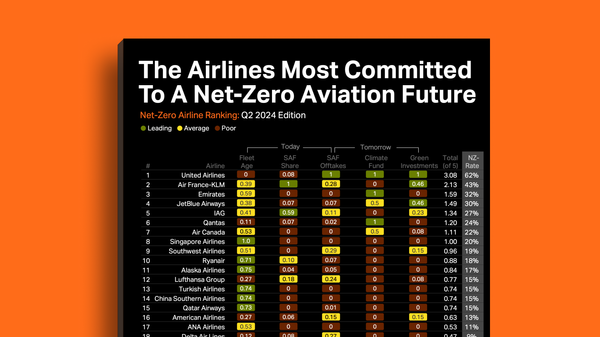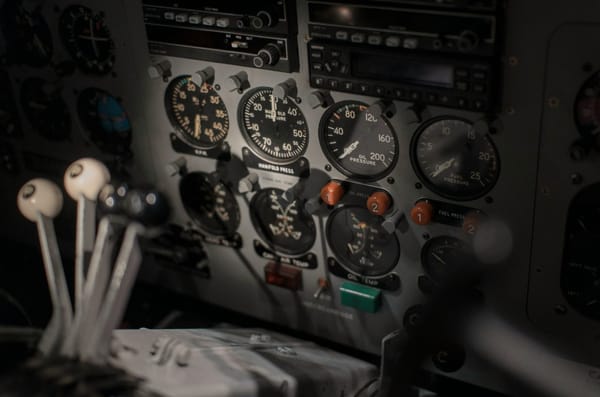Uncovering the Truth: Aviation's Net-Zero Illusion
A data-driven view on the realities behind aviation's net-zero aspirations.

Air travel stands as one of humanity's most remarkable technological achievements, connecting people, cultures, and economies across the globe.
Over the past fifty-plus years, the democratization of air travel has made the world more accessible and connected, fostering exploration and cultural exchange like never before. This remarkable industry has effectively "shrunk our world," allowing us to experience the richness and variety of our planet firsthand.
However, as we celebrate these achievements, we must also confront a critical reality: the aviation industry is at a crossroads. While other sectors have embarked on significant green transitions, aviation remains largely stuck in business as usual.
In fact, the aviation industry is masking its true colors when it comes to sustainability progress.
- Glossy marketing campaigns proudly proclaim so-called "Green Fares"—but there's nothing green about commercial flying yet.
- Airlines offer "CO2 Offsetting." However, many experts label such offsetting as largely fraudulent.
- Then, there are the more trivial sustainability efforts that somehow make headlines, like the introduction of non-plastic cabin cutlery, as if such gestures have any bearing on a flight's CO2 emissions.
Beyond these superficial greenwashing tactics, many airline CEOs and industry advocates frequently roll out fresh sustainability slogans and non-binding net-zero outlooks that are grounded in mere wishful thinking.
All of this masks an unsettling reality:
We think it's a “Mayday” call for the industry to face the hard truth about where aviation's CO2 impact is heading. Rather than progressing towards net zero, the situation is deteriorating, as aviation is on a steady trajectory to become one of the top environmental offenders across the industry landscape.
If you think we're overreacting, let's examine a handful of key charts that cite mostly publicly available information—facts often ignored or blatantly downplayed by most airline CEOs and industry figureheads.
The initial chart paints a painful picture, revealing a fundamental shortcoming of the aviation industry: while other transport sectors have made strides in separating growth from emissions, aviation stands alone in its inability to do so.
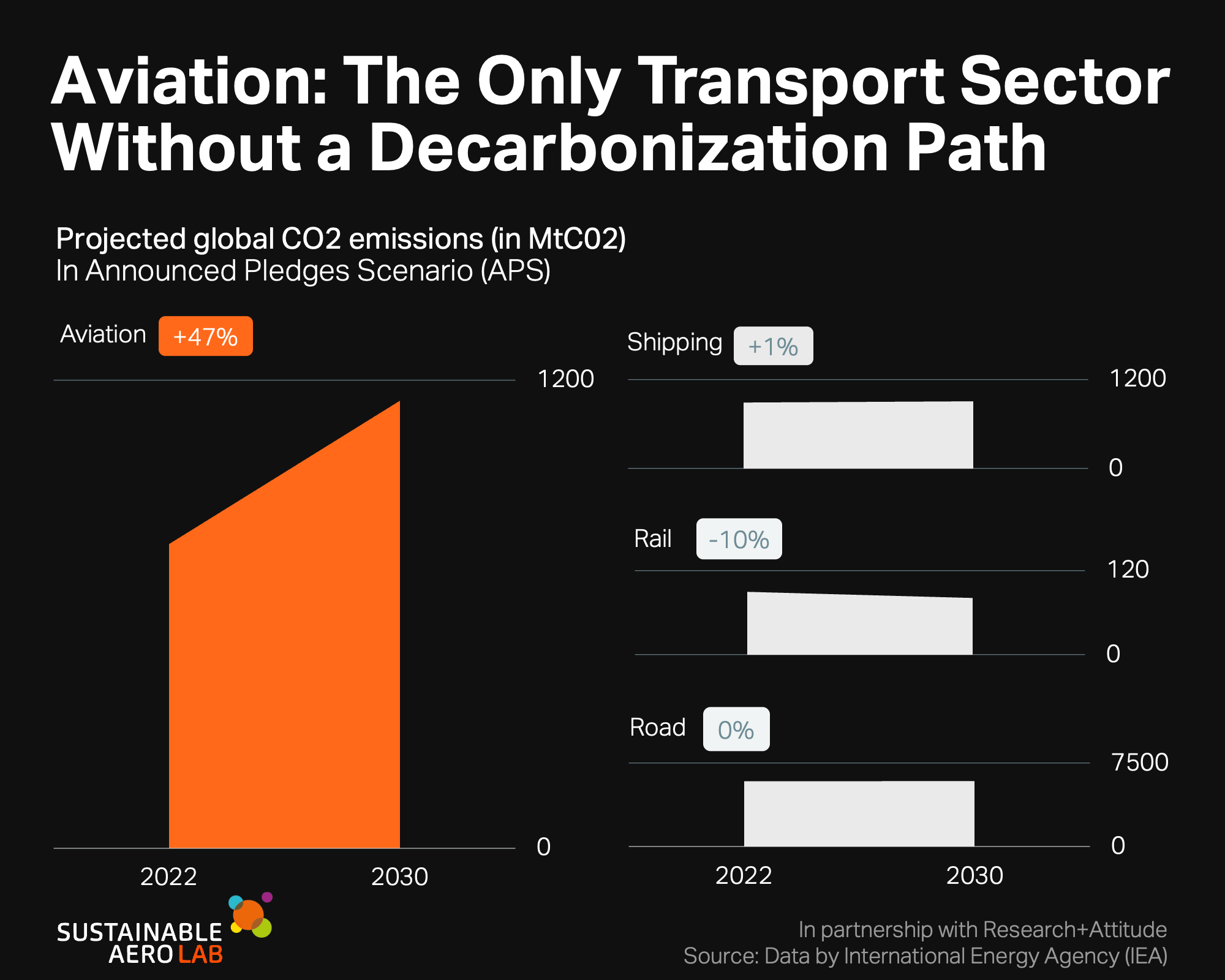
Electric vehicles have provided the automotive world with a path to a greener future, decoupling their expansion from greenhouse gas emissions. However, aviation, grappling with the immense technological challenge of transporting hundreds of people in aircraft weighing an average of 100 tons–a task too energy-intensive for today's battery technology–hasn't found its green breakthrough.
While airline CEOs and industry proponents tend to boast improved CO2 per passenger mile statistics, these don't tell the whole story.
- Yes, individual flights have become more efficient, but the sheer volume of new flights and passengers projected in the coming decade will easily outpace these gains. In fact, Q1 2024 CO2 emissions from airlines have already surpassed pre-pandemic levels.
- In plain terms, even as each flight emits a tad less, the sky will be saturated with more flights than ever before. This means that the industry's total carbon footprint is set to soar by nearly 50% by the end of the decade.
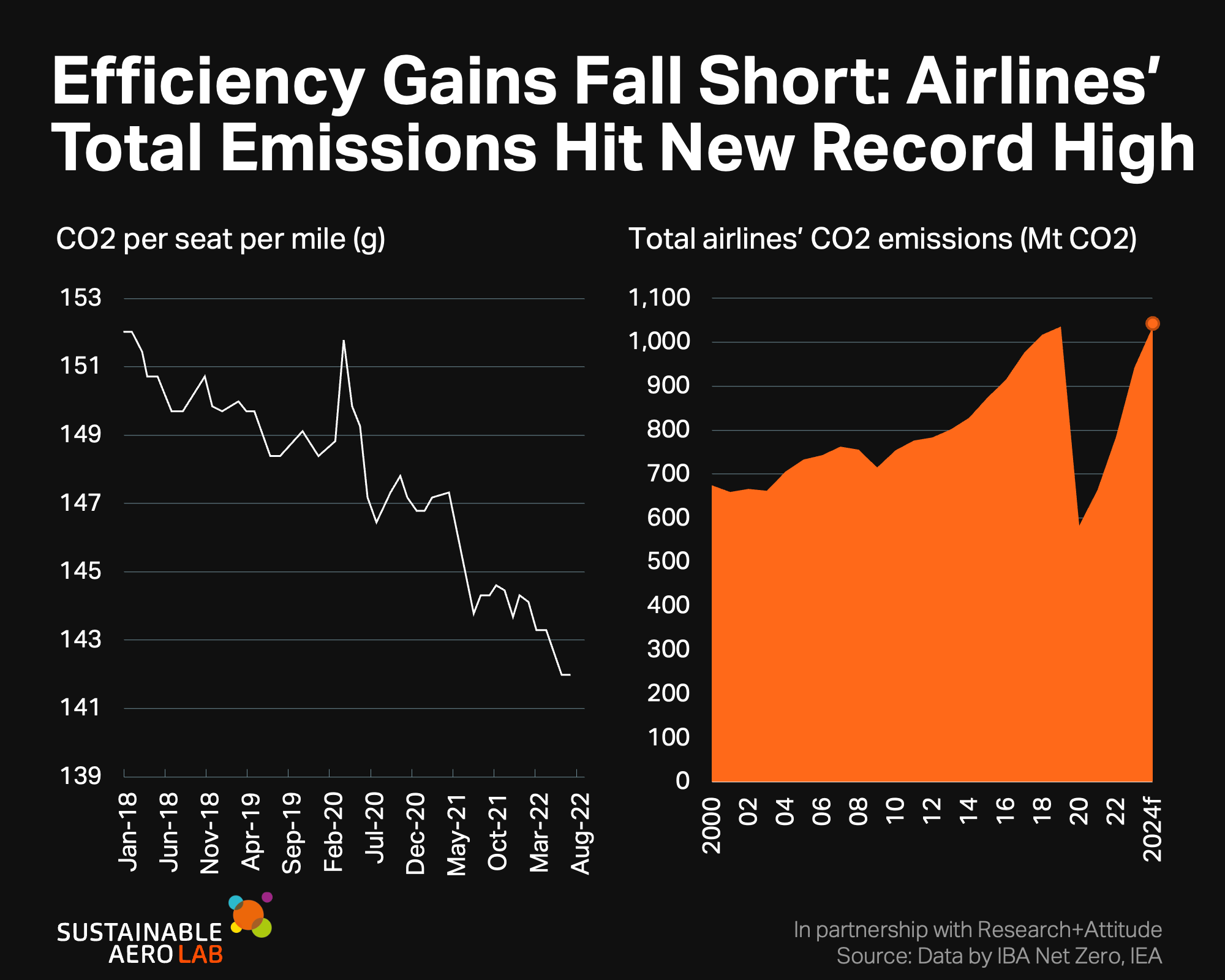
For years, aviation leaders have defended our industry's environmental impact with a single, seemingly modest statistic: aviation is responsible for only 2-3% of global emissions. The argument goes something like this: Why target an industry that contributes such a marginal slice of the environmental problem?
But the narrative is about to shift, and dramatically so.
- Based on Boeing's aviation emissions models and the IEA's APS scenario forecasts, aviation's CO2 emissions will double to 5% of the world’s total in less than eight years.
- If we continue on this trajectory, by 2050, aviation alone will account for a staggering quarter of all CO2 emissions globally. The Energy Transition Commission, which projects aviation could be responsible for 22% of global emissions by 2050, confirms this outlook.
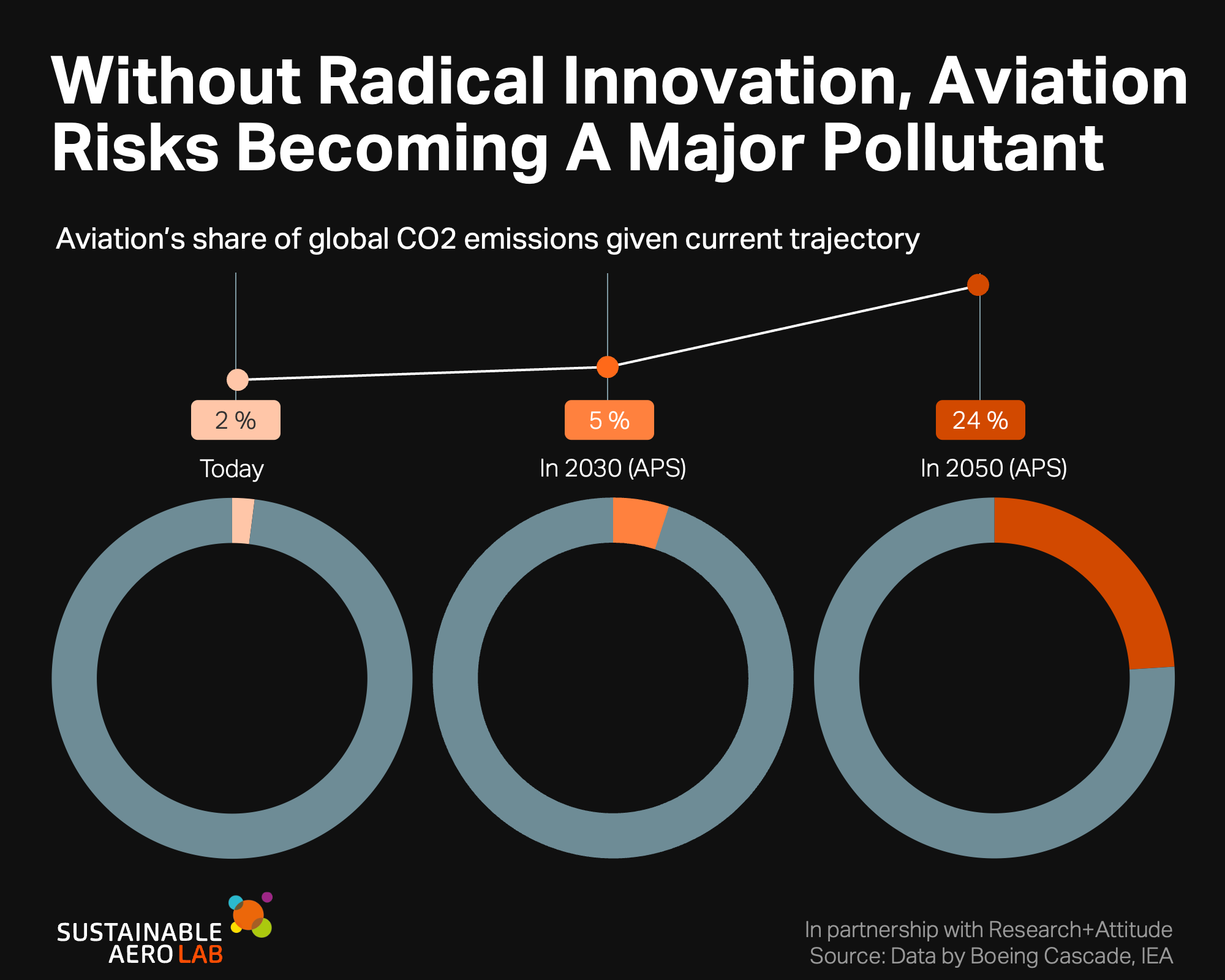
The repercussions of such an escalation are immense and largely unpredictable.
One thing, however, is certain: mounting pressure and public scrutiny will challenge aviation's very essence.
This hard reality leads us to the question: what can the aviation industry do to reverse its CO2 outlook?
As of today, the aviation industry has three strategies available to mitigate its carbon crisis.
- Foster Fleet Renewals: The transition from non-efficient gas guzzlers to the latest aircraft models is non-negotiable. Newer models leverage advancements in aerodynamics, propulsion systems, and lighter materials, making them, on average, up to 25% more CO2 efficient than their predecessors.
- Maximize Operational Efficiencies: Every operational aspect, from reducing terminal wait times to optimizing flight routing, including contrail reductions, must be aggressively fine-tuned. The goal is straightforward: generate fuel savings and, consequently, CO2 reductions wherever possible.
- Master SAF Adoption: The rapid integration of Sustainable Aviation Fuel (SAF) into the fuel mix is imperative. SAF can offer up to 80% life cycle CO2 savings compared to conventional jet fuel (depending on the type and feedstock involved).
Side note: There exists a fourth method—carbon offsets. However, we choose to ignore this approach, given it is not a direct contributor to reducing aviation's emission footprint, and, arguably, a distraction at best, especially given its increasingly fraudulent nature.
Assuming only moderate annual passenger growth (3%) over the next 26 years, aviation will contribute over 2.5 Gt of CO2 equivalent by 2050. Analysis based on Boeing's Cascade forecasting dashboard reveals that even aggressive fleet renewals, extreme leveraging of operational efficiencies, and maximizing SAF adoption could collectively address just slightly over 60% of aviation's 2050 CO2 output.
This leaves a 40% shortfall from the needed net-zero target—a gap that is likely to be much bigger given the real-world challenges of overcoming SAF shortages and realizing operational efficiencies, which include complex regulatory changes such as implementing the Single European Sky.
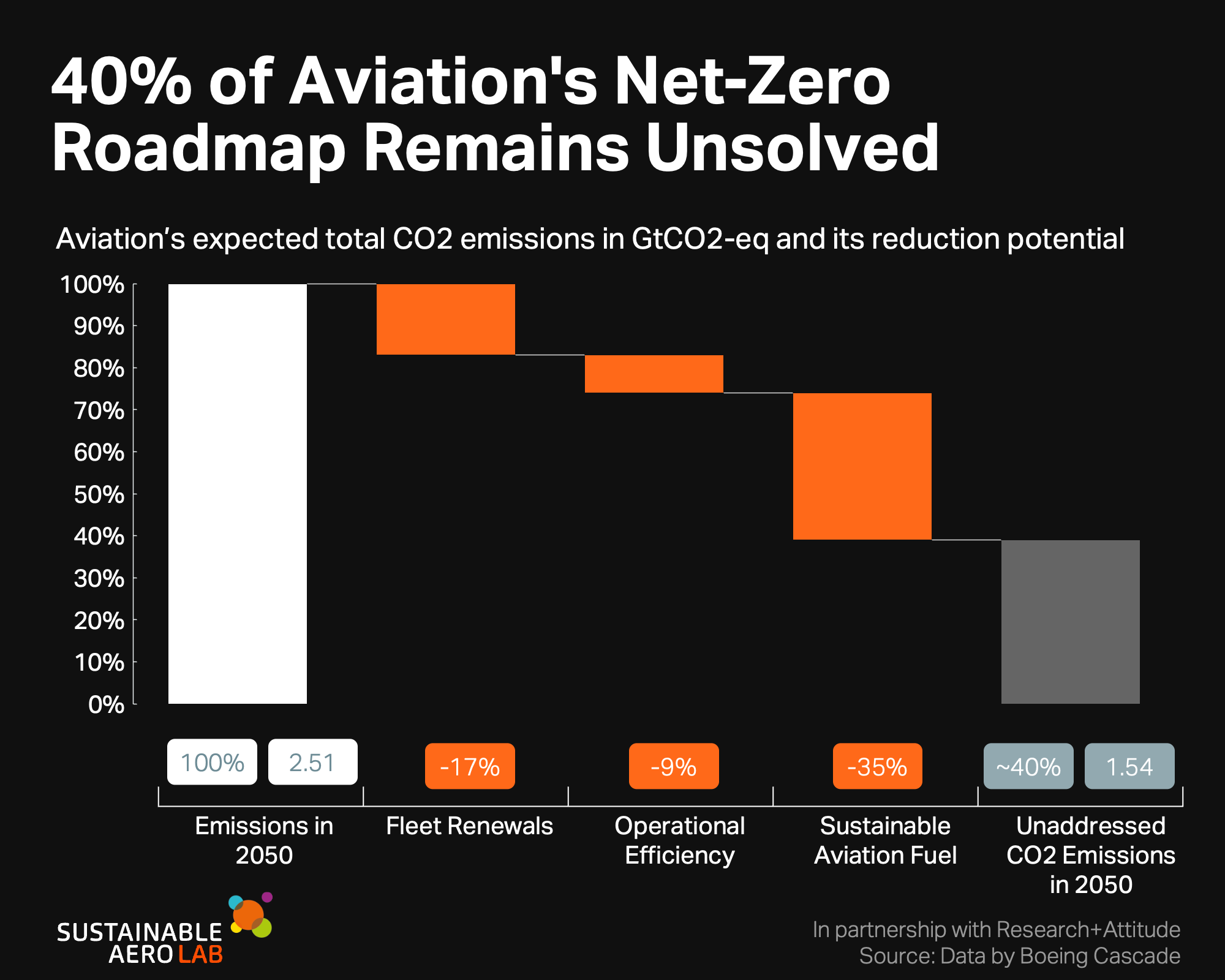
When faced with data like this, industry professionals often point to SAF as the lifeline for aviation, arguing that it could be expanded far beyond the current projections, potentially making up the missing 40% of emission savings.
However, this optimism masks a deeply concerning reality for SAF's prospects.
From massive carriers to boutique airlines, everyone seems to be jumping on the SAF bandwagon. Airlines have showcased SAF-powered demonstration flights, announced elaborate purchasing agreements with fuel providers, launched SAF-centered compensation schemes for customers, and fostered numerous partnerships, all in the name of promoting SAF.
The message being sent out is loud and clear: aviation has found its escape route from the impending climate disaster, and that route is paved with SAF.
But let's zoom out from these glossy announcements and look at the actual data.
The SAF utilization today paints a rather bleak picture.
- A mere 0.45 Mt of SAF was used by the entire aviation industry in 2023.
- This amounts to a mere 0.15% of the colossal 300 Mt jet fuel demand last year—truly just a drop in the vast fuel tank.
Current projections reveal that, even with all the new SAF plants in the pipeline, only around 8.4 million tonnes of SAF will be produced by 2030.
The irony? Airlines have already locked in offtake agreements for SAF that significantly surpass this projected production.
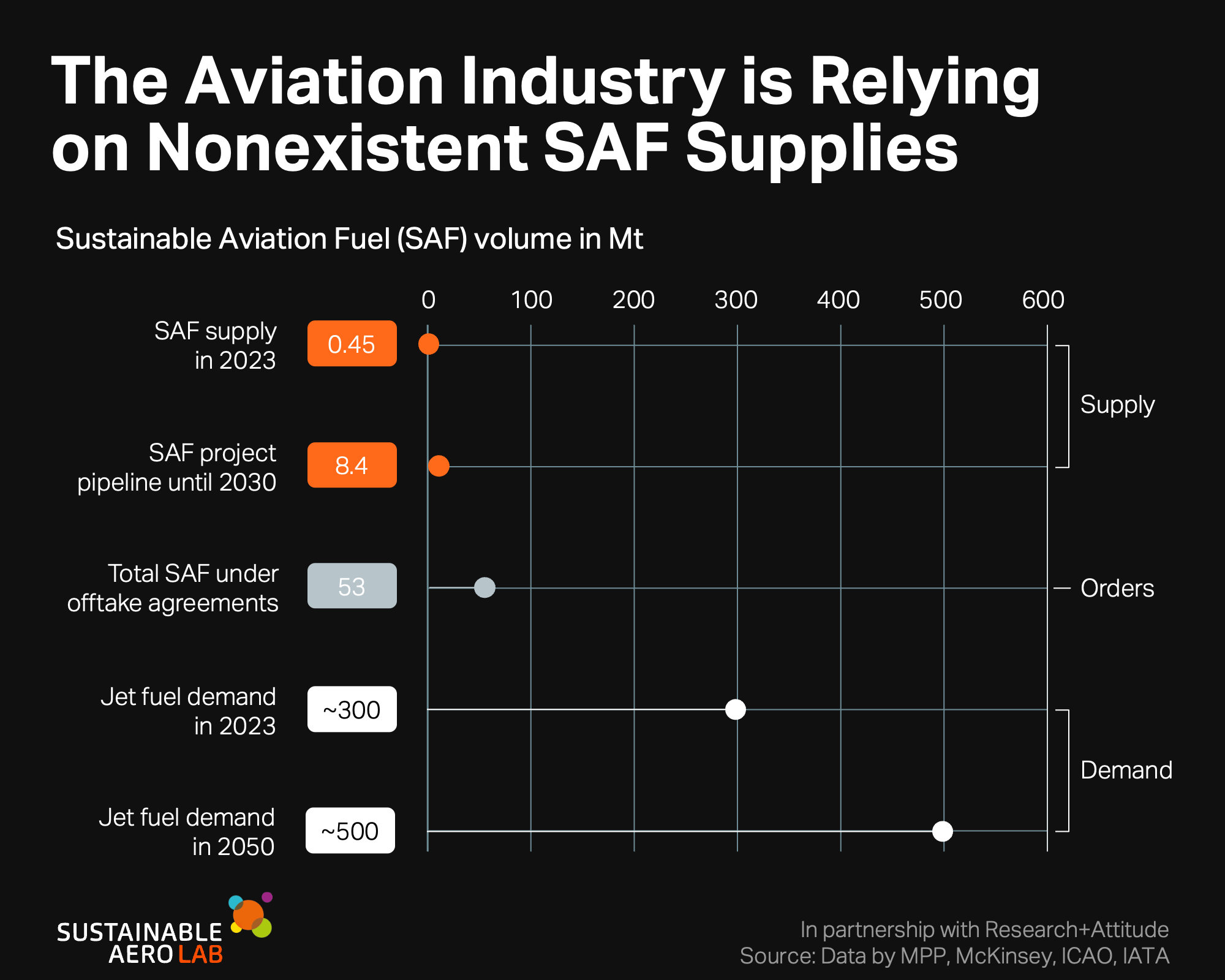
In essence, the industry is prematurely counting on SAF supplies that won't even exist by the end of this decade.
So, what would it take for the aviation sector to significantly amplify its SAF uptake?
A massive expansion of SAF production capacity is mission-critical.
- According to estimates from MPP, the industry would need to green-light and commission up to 400 new SAF plants TODAY to achieve a supply level of 40-50 million tonnes by 2030.
- Even with such ambitious expansion, SAF would still only cover around 15% of the projected total jet fuel demand in 2030, far from being a meaningful net-zero solution.
With all these facts in front of us, the key message should be clear: the aviation industry is not doing enough to become net zero.
Another worrisome data point further underscores this lack of commitment.
Data from Bloomberg and ICAO reveal a glaring disparity between airlines' net-zero promises (what they say they will do) and the launch of actual sustainability projects (efforts they actually implement to reduce emissions).
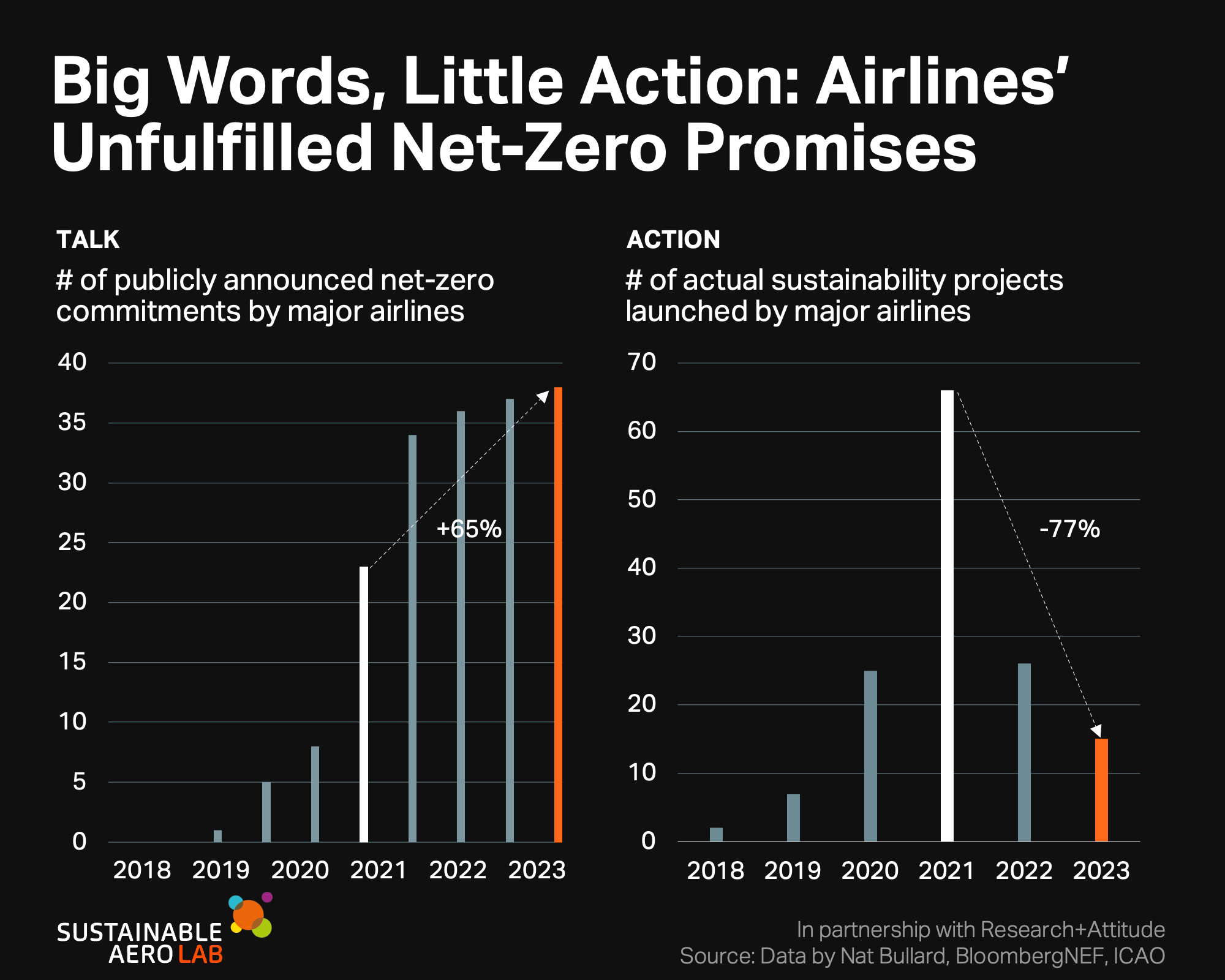
This comparison highlights a critical point: talking about sustainability isn't enough.
Real progress requires substantial action and investment.
Without this, the aviation industry cannot pivot from ambition to reality.
Displaying all this data might seem like we are criticizing the aviation industry, but that is not our intention. We don't intend to demonize the industry. We consider ourselves part of it, too, and we deeply appreciate what aviation has brought to the world.
However, the aviation sector stands at a future-defining inflection point. Too many industry stakeholders pretend everything is alright when, in reality, it's far from it.
The aviation industry has yet to discover how to decouple growth from emissions. It has to begin treating sustainability as a top corporate priority.
The only logical next step for aviation is action. That means less talk about sustainability and more genuine commitments.
Here's what we propose:
- Commit to Honest Accountability
The aviation industry needs to remove its green facade.
We must confront the sobering reality: given our current technological capabilities, achieving net zero for the aviation sector is a distant dream.
With today’s effort, we're not even scratching the surface of net-zero ambitions. Incremental improvements won't reverse the existing trend lines.
- Capital for Genuine Change
The sustainability challenge facing aviation is not just an advocacy issue; it's fundamentally a technological hurdle.
Real change demands radical innovation. And what drives innovation? Capital. Investments in pioneering SAF facilities, funding groundbreaking research into electric propulsion, and other initiatives that aim to revolutionize our existing paradigms are paramount.
The urgency for capital infusion is immense. Credible estimates from ICAO suggest that achieving net zero for the aviation sector could cost a staggering $5 trillion USD by 2050, translating to an annual net-zero innovation budget of $175 billion USD.
To contextualize this amount:
- $5 trillion USD exceeds what the entire airline industry has spent on jet fuel over the past 30 years!
- $175 billion USD per annum on radical innovation is six times larger than the aviation industry’s current R&D spending, which is about $23 billion USD annually.
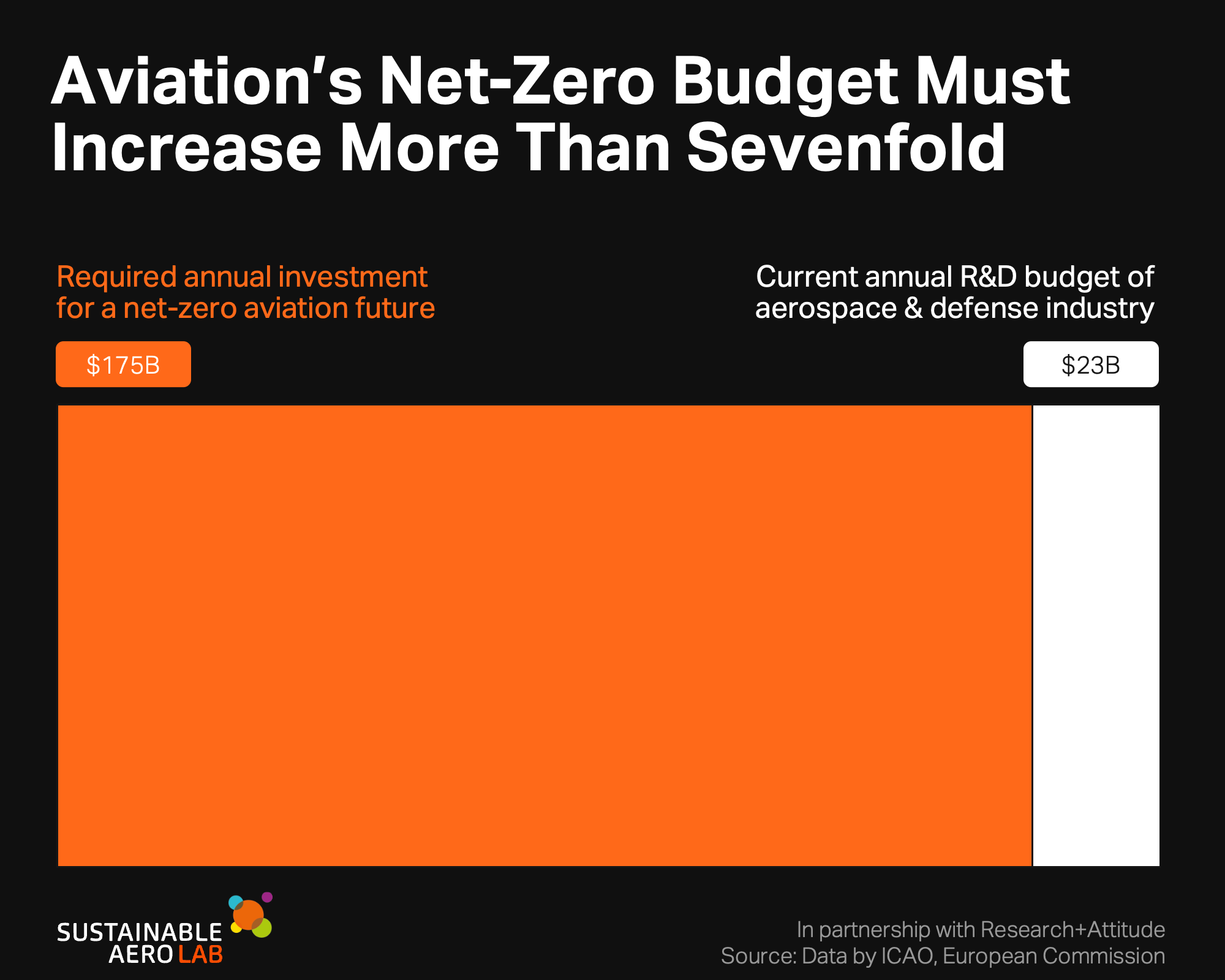
The scale of this crisis is unprecedented. One might argue it's the most significant challenge the sector has confronted since the Wright brothers pioneered flight.
Going forward, the aviation industry must allocate an unprecedented level of investment into breakthrough technologies to stay on a realistic path toward our net-zero goals.
The Role of the Net-Zero Airline Ranking
The Sustainable Aero Lab, in partnership with Research+Attitude, created the Net-Zero Airline Ranking. It is our initiative to motivate the airline industry to invest in radical net-zero innovation.
- Through transparency, we aim to bridge the gap between net-zero rhetoric and real action.
- By highlighting real commitment—or the lack thereof—we hope to cultivate a sense of urgency and propel the industry towards genuine, tangible change.
True commitment is reflected through actions, particularly those involving monetary investments in innovation and technology. Therefore, the Net-Zero Airline Ranking evaluates the leading airlines worldwide based on their monetary commitments to net-zero efforts.
How do we do this?
We have taken a pragmatic approach by introducing and analyzing specific, easy-to-understand metrics that reflect tangible financial commitments to a sustainable aviation future. For more details, please explore our methodology.
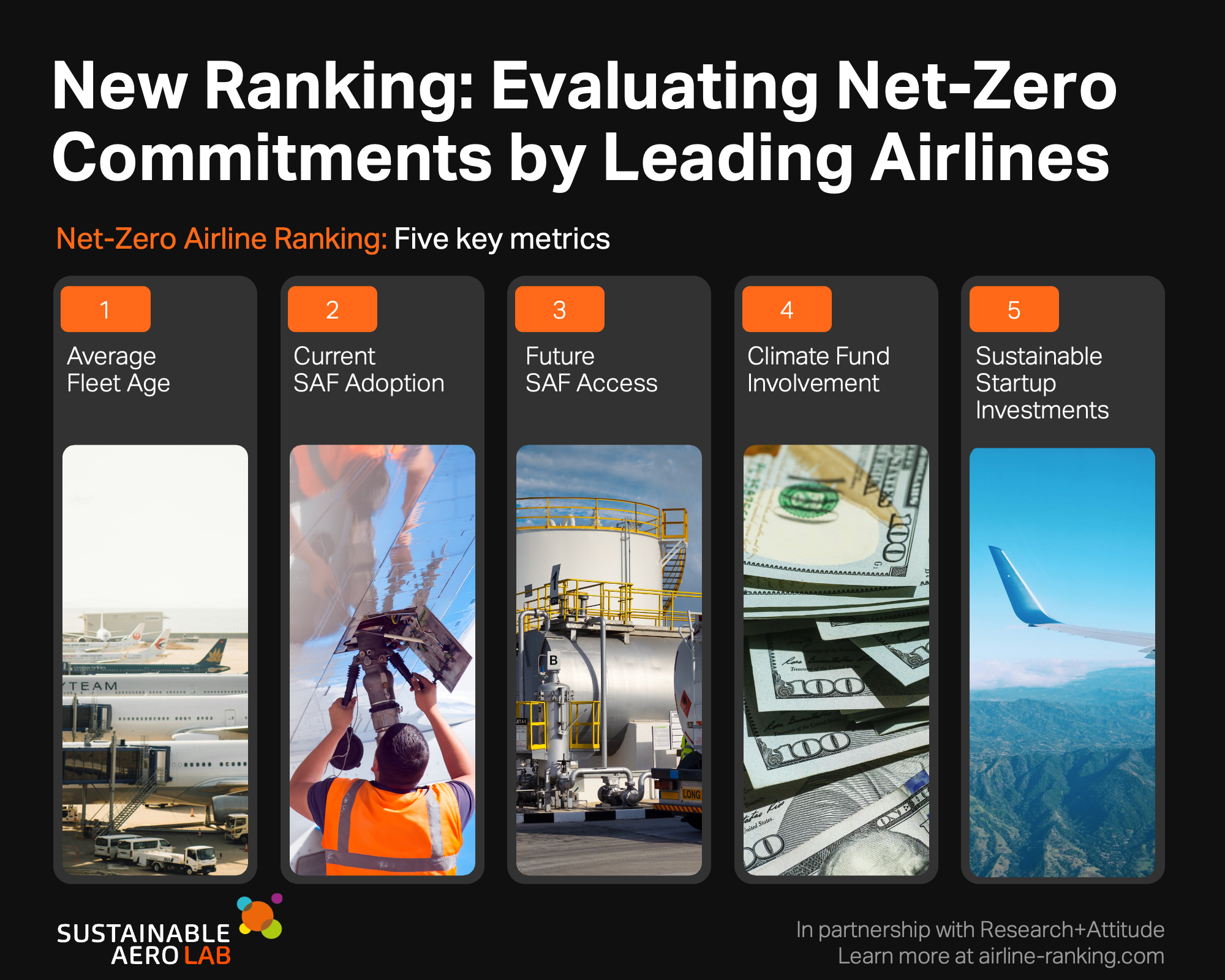
Our long-term objective is for the airline industry to measure and report net-zero investments with the same rigor and transparency as corporate R&D budgets, indicating a true focus on sustainability and disruptive innovation.
We hope to encourage more airlines to commit to real financial investments, ultimately driving the entire industry towards a sustainable future.
For a look at the current Net-Zero Airline Ranking, here are the latest Q2 2024 results.

